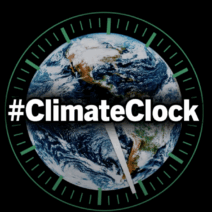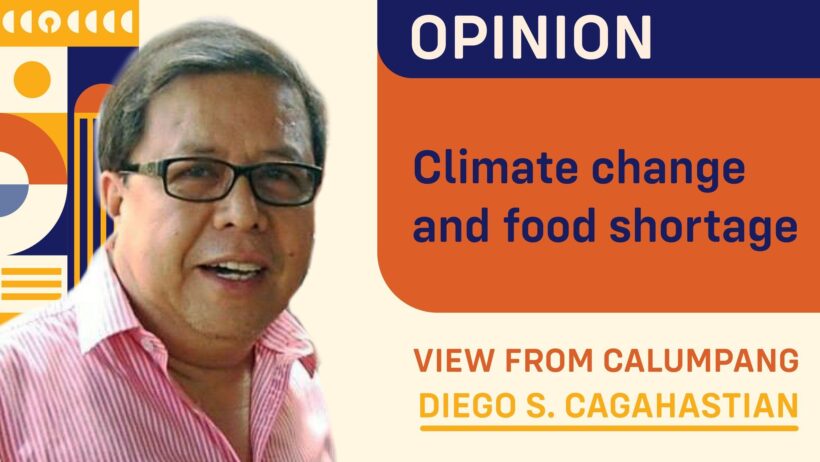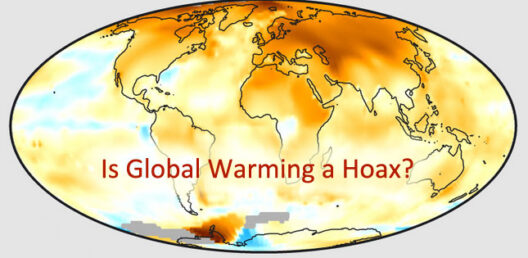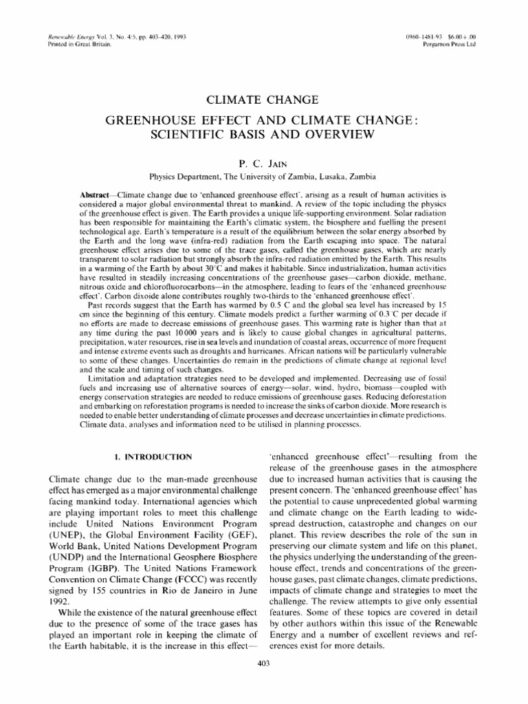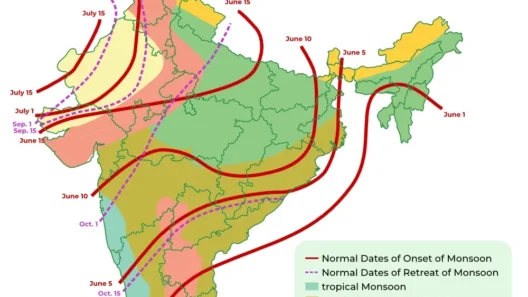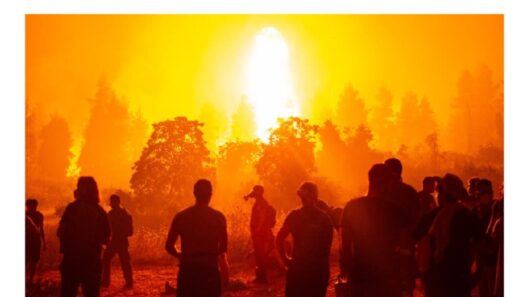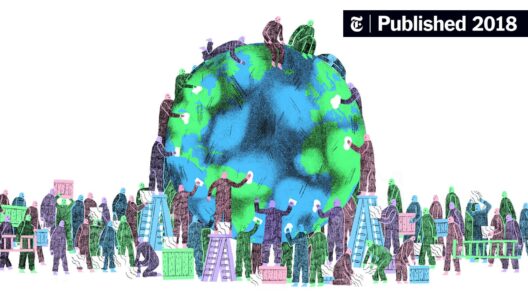Climate change is not merely an environmental concern; it is emerging as a potentially cataclysmic challenge to global food security. As temperatures rise, weather patterns destabilize, and sea levels encroach upon fertile land, the implications for agriculture — a cornerstone of human sustenance — are profound. This article delves into the complex interplay between climate change and food shortages, illuminating the multifaceted avenues through which climatic shifts threaten our ability to feed a burgeoning global populace.
Understanding the intimate relationship between climate dynamics and agricultural productivity is essential. How might these changes disrupt the delicate web that sustains food systems worldwide? Let us explore the existential threats poised by climate change, which may culminate in widespread food scarcity.
Environmental Erosion: The Silent Saboteur
The degradation of arable land presents one of the most pernicious effects of climate change. Escalating temperatures and altered precipitation patterns lead to soil erosion, diminished soil fertility, and desertification. These processes not only reduce agricultural yields but also impair the land’s ability to recover, creating a vicious cycle of diminishing returns for farmers.
Ongoing research highlights the alarming trend of soil degradation, with estimates suggesting that approximately one-third of the planet’s arable land is already compromised. As crops become less viable due to nutrient-poor soils and erratic weather, food production systems are strained. Farmers may struggle to cultivate traditional crops, forcing them to abandon time-honored agricultural practices that have sustained communities for generations.
Water Scarcity: Thirsty Futures
With the increasing variability of rainfall patterns due to climate change, water scarcity has emerged as a critical concern for agriculture. Regions that historically relied on predictable rainfall are now grappling with prolonged droughts, while others face the threat of flooding. Water resources become limited, and with them, the agricultural potential of entire regions is jeopardized.
Irrigation, once a reliable means to sustain crops, becomes less effective as groundwater levels plummet. This is particularly pressing in areas already suffering from socio-economic instability, where reliance on consistent access to water is paramount. The notion of providing sufficient water for irrigation seems increasingly utopian as climate change exacerbates drought conditions. As water becomes a rarer commodity, tensions may arise over access, further complicating food distribution networks.
Crop Viability: Nature’s Gamble
Every species of crop has its optimal conditions for growth, including a certain temperature range, humidity level, and soil type. Yet, the relentless advancement of climate change challenges these norms, threatening the viability of key food staples. Rising temperatures can lead to heat stress in plants, accelerating their maturation but reducing the quality and quantity of yields.
Crops such as wheat, rice, and corn — fundamental to global diets — may experience declines in output due to unfavorable climate conditions. As these staples falter, reliance on alternative crops may not suffice to bridge the gap. Moreover, as pest populations wax and wane in response to climate fluctuations, increased infestations may further compromise harvests. Farmers may find themselves caught in a precarious cycle where traditional agriculture is no longer viable, and switching to alternatives often comes with its own set of challenges.
Global Trade Disruptions: The Domino Effect
The ramifications of localized food shortages reach far beyond the regions that suffer from them. Climate change-driven disruptions in one region can ripple through global markets, compounding the crises faced by food-insecure populations. Countries that typically rely on imports to meet their nutritional needs may find availability diminished as exporting nations experience their own agricultural failures.
Logistical challenges, exacerbated by climate change, can lead to supply chain disruptions. Increased weather extremes create hardships in transportation networks, further complicating food distribution. When harvests dwindle and trade flows are impeded, food prices escalate, disproportionately affecting the most vulnerable communities.
The Economic Burden: The Price of Climate Inaction
The costs associated with climate change extend well beyond the environmental realm; they infiltrate economic landscapes. As farmers struggle with the heightened unpredictability of crop yields, the economic viability of agriculture falters. This shift threatens livelihoods, particularly in developing nations that rely heavily on agriculture as a primary means of income and sustenance.
Investments in climate-resilient agricultural practices are critical but often come with a hefty price tag. Farmers may require access to financial resources, advanced technology, and training to adapt to changing circumstances. However, in regions where resources are scarce, this necessary transformation could be prohibitively expensive, further exacerbating existing inequalities.
Innovative Solutions: The Light at the End of the Tunnel
Despite the formidable challenges posed by climate change, innovative strategies offer a glimmer of hope. Sustainable agricultural practices that emphasize resilience — such as permaculture, agroforestry, and regenerative farming — can mitigate some adverse effects. These ecologically sensitive approaches capitalize on natural processes, enhancing soil quality, preserving water resources, and bolstering crop diversity.
Moreover, advances in biotechnology and genetic engineering present exciting avenues for developing climate-resistant crops. By tailoring plant characteristics to withstand extreme weather conditions, the agricultural sector can adapt to a rapidly changing environment. Research into vertical farming and urban agriculture also promises to enhance food security in increasingly crowded urban landscapes.
In conclusion, the prospect of climate change leading to a global food shortage is a multifaceted issue rooted in environmental, economic, and social dynamics. As the world grapples with these escalating challenges, a concerted effort is essential to innovate and implement sustainable solutions to ensure that future generations are adequately nourished. Understanding the nuances of how climate change affects food systems is the first step toward fostering resilience and safeguarding our common future.


